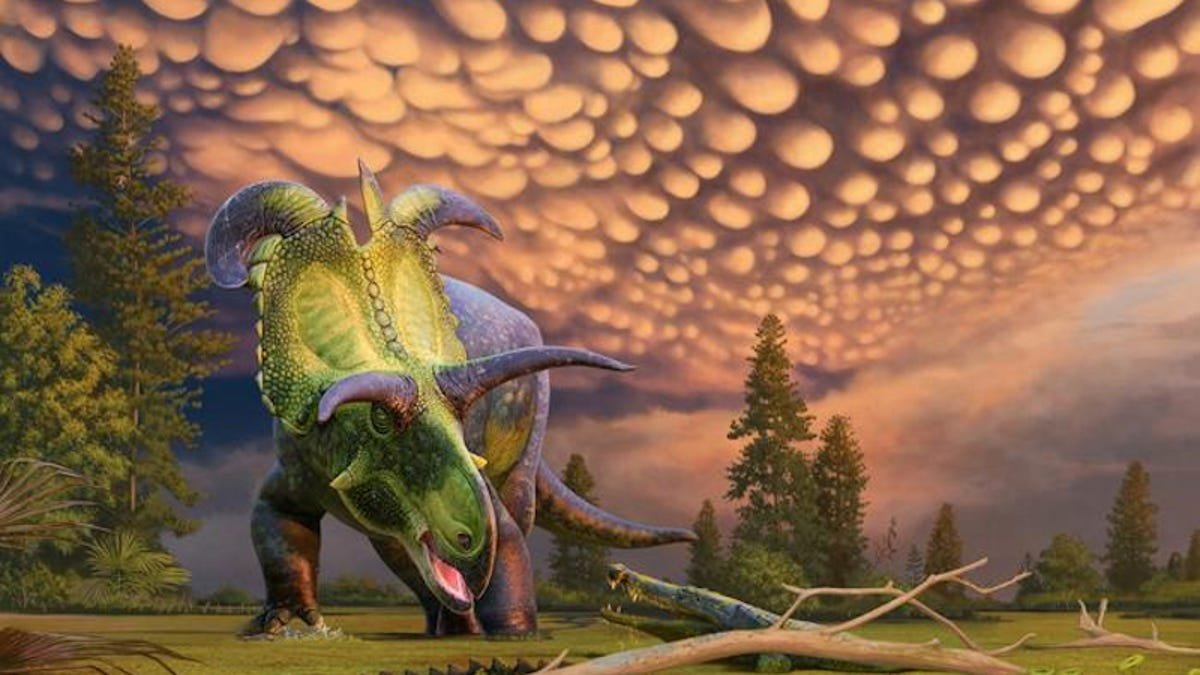Scientists have discovered a new, cool-looking dinosaur. The beast with knotted horns is a relative of celebrities Triceratops It has been named Locyceratops rangeiformis. They are thought to have been roaming the western half of North America more than 78 million years ago, when the continent split into several large island masses.
Discover and name L. rangeiformis It was conducted by a large group of researchers from the United States, Canada, the United Kingdom, Denmark, and Panama. The fossils used to identify it were excavated from the badlands of northern Montana, not too far from Canada. At the time, it was thought that the area was primarily swamps and floodplains. And L. rangeiformis They are thought to have made their home along the eastern shores of Laramidia – an island continent during the Late Cretaceous that existed as a result of the Western Interior Sea Route that divided what we now call North America in two.
The dinosaur’s first name refers to the Norse god Loki, known for his horned clothing, while the second name refers to caribou, present-day animals that tend to have asymmetrical horns. Put the two together and L. rangeiformis Literally means: “Loki’s horned, stag-like face.”
L. rangeiformis It is part of a diverse group of dinosaurs known as ceratopsids, which are thought to have first appeared about 92 million years ago. Ceratopsids were successful as a whole, with their members living all the way until the end of the dinosaur age 66 million years ago (when, you know…). But scientists think so L. rangeiformis They belong to a much narrower niche than these dinosaurs.

The team’s discovery is detailed in a paper published Thursday in the magazine BergWhile the Natural History Museum of Utah and other affiliated institutions are unveiling the dinosaur to the public this week. The team has also made beautiful reconstructions of these dinosaurs available and three other ceratopsian species that lived alongside them.
“This new dinosaur pushes the envelope on the exotic ceratopsian headdress, sporting the largest ornate horns ever seen in a ceratopsian,” co-author Joseph Sertich, a paleontologist at the Smithsonian Tropical Research Institute and Colorado State University, said in a statement. Released By the University of Utah, which runs the museum.
L. rangeiformis It is the fourth ceratopsid dinosaur and fifth horned dinosaur generally identified in the region, prompting paleontologists to re-evaluate the evolutionary branch of these animals. The isolated nature of living in Laramidia may have been the motivation behind this L. rangeiformis and other ceratopsids to evolve in radical ways. Although the horns may seem scary to us today, researchers believe that they were more like decorations, used to entice females to mate.
“These skull ornaments are one of the keys to unlocking the diversity of horned dinosaurs, and demonstrate that evolutionary selection for showy displays contributed to the astonishing richness of Cretaceous ecosystems,” Sertich said.

